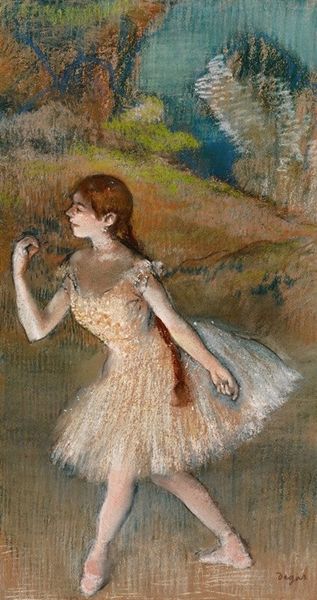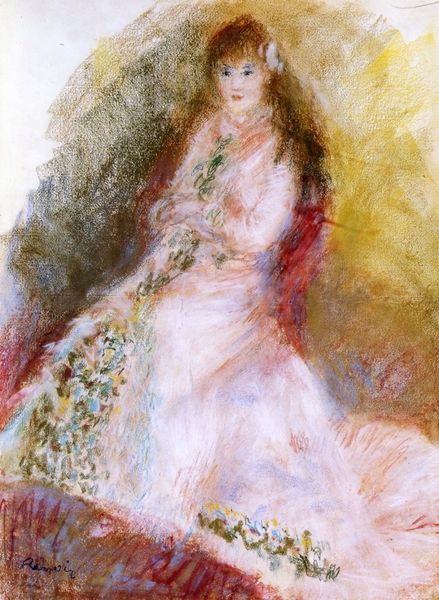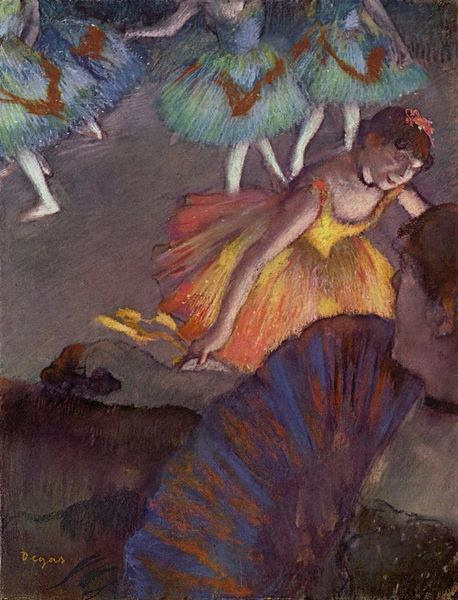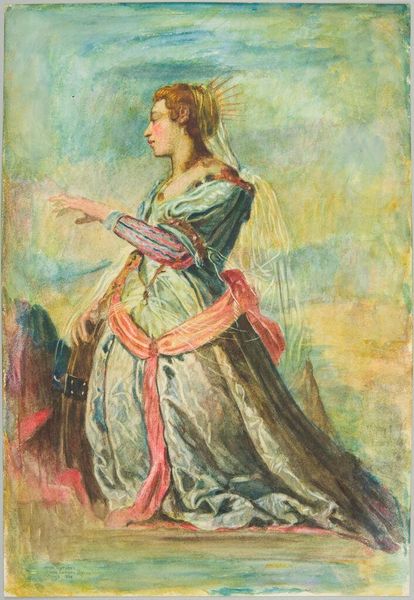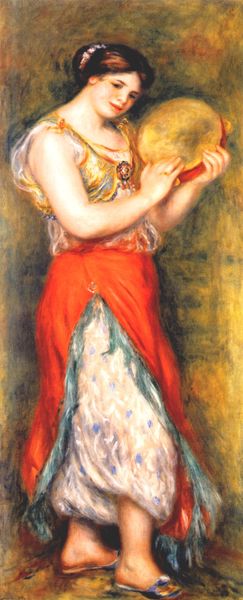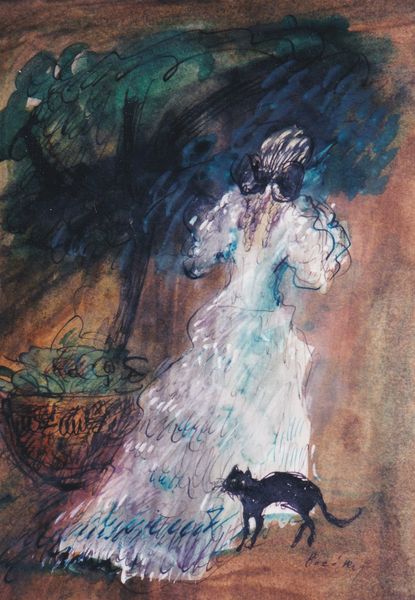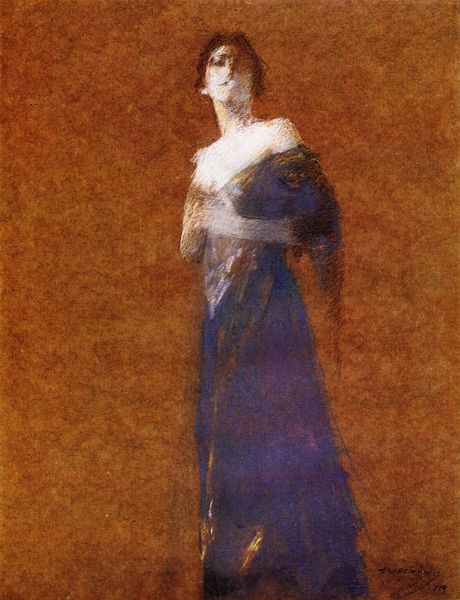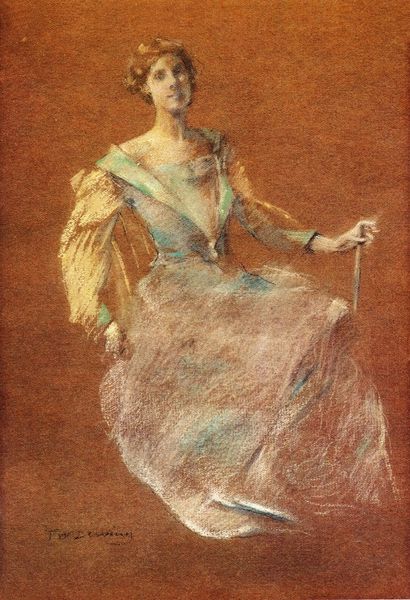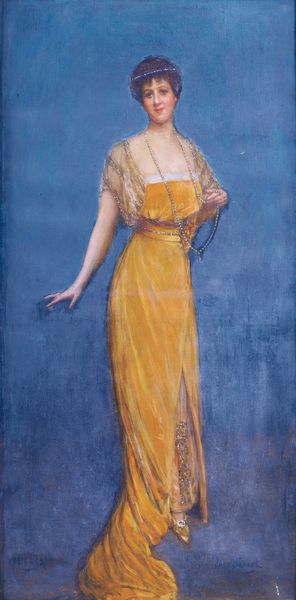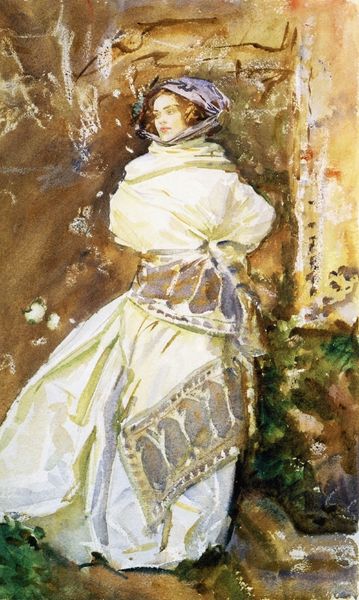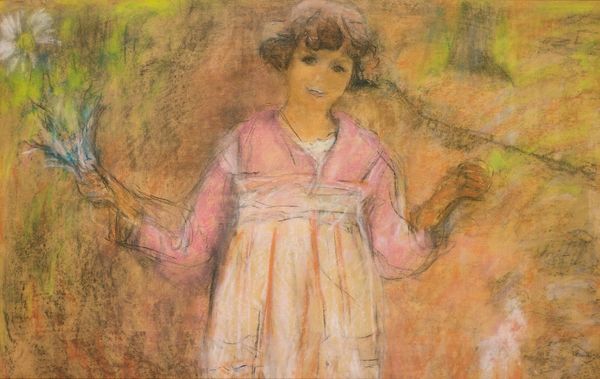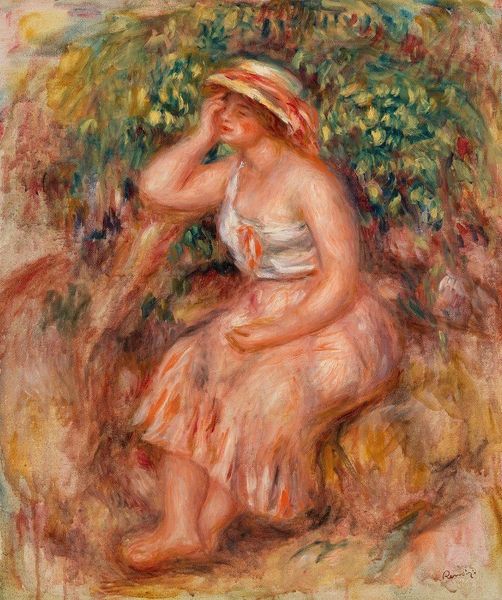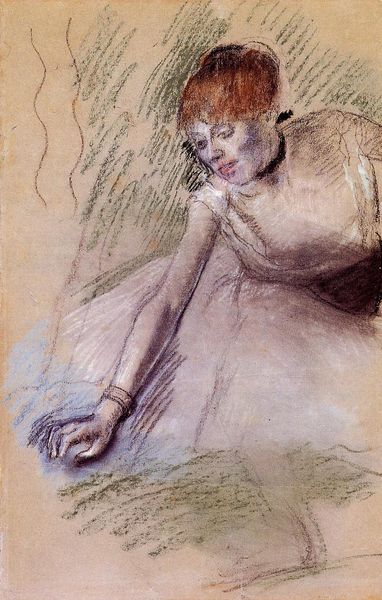
drawing, pastel
#
portrait
#
drawing
#
impressionism
#
figuration
#
oil painting
#
france
#
pastel
#
watercolor
#
expressionist
Dimensions: 58.4 x 45.7 cm
Copyright: Public domain
Curator: Looking at Degas' "Singer in Green" from 1884, rendered in pastel and watercolor, I’m struck by its quiet confidence. There's an immediacy that belies the subject's careful posture. What are your initial thoughts? Editor: It has an energy, certainly. The figure’s tilted head and raised hand suggests an immersive performance. Her costume, though dazzling in hue, seems almost incidental to her expressiveness. Curator: Degas repeatedly represented dancers and singers, fascinated by their performative selves but also their everyday experiences. Consider the evolution of women’s roles in French society at that moment. Here, what might the colors and the singer’s stance communicate about changing perceptions of women and artistic expression? Editor: Precisely. The vibrant palette pushes against traditional artistic portrayals of women as demure or passive, doesn’t it? Her green accents throughout the piece are reminiscent of the Belle Époque's absinthe culture, and could point to the burgeoning independence and sometimes controversial roles of women in the arts. Curator: Yes! And green often symbolizes growth, transformation, but also, sometimes, envy or deceit. Might Degas be hinting at the complicated role of female performers then, perceived both as idols and as suspect? The Impressionist era held complex, often contradictory views. Editor: Interesting how he used watercolor and pastel here. How would the image be affected, say, if it were oil on canvas instead? Curator: The combination lends a delicate, ethereal quality, but also a sketch-like immediacy. This allows the viewer to connect with a seemingly in-process emotional state. If he were using oils, a more definitive "finish" might obscure that vulnerable aspect. Editor: The choice of media is fascinating considering Impressionism’s project to catch fleeting moments and how art captured real-time sentiments. Did these stylistic choices resonate culturally at that time, or were these new forms seen as an outlier? Curator: The artwork was considered progressive for its time, blending convention and new art ideals; many saw pastels as preliminary or amateur forms of painting, and so its acceptance symbolized modern views that challenge traditional artistic values. Editor: Looking again at Degas' image, I think its enduring appeal arises from that unresolved tension: The blending of an individualized feeling with cultural history. Curator: Absolutely. "Singer in Green" captures that brief but powerful moment when performance and self become beautifully entwined.
Comments
No comments
Be the first to comment and join the conversation on the ultimate creative platform.

